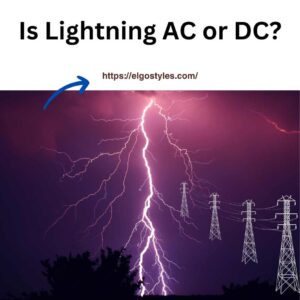Lightning: AC or DC?
Lightning: AC or DC?—The Full Explanation
When lightning strikes, it releases an astonishing amount of electrical energy in an instant. From a scientific and engineering perspective, understanding the nature of this energy can help us design better protection systems, from surge protectors to lightning rods. The common question arises: Is lightning more like AC or DC?
The answer? Lightning behaves more like direct current (DC), but it’s far from being purely DC.

AC vs. DC: A Quick Refresher
To better understand lightning, let’s first review the basics of AC and DC currents:
- Alternating Current (AC): AC electricity alternates its direction, switching back and forth many times per second. This is the type of electricity that powers most homes, with a frequency of 50 to 60 hertz, depending on the region.
- Direct Current (DC): DC electricity flows in one consistent direction, like the power from a battery. Unlike AC, it doesn’t alternate, making it ideal for steady, low-voltage applications like electronics.
Why Lightning Resembles DC More Than AC
Lightning strikes deliver a massive jolt of electrical energy, and this burst of energy behaves more like direct current (DC) than alternating current (AC). Here’s why:
- Unidirectional Flow:
In most cases, lightning discharges electricity in a single direction—from the cloud to the ground (or vice versa). This unidirectional flow resembles DC, where electricity moves in one constant direction. - Short, Powerful Burst:
A lightning strike happens extremely fast, often lasting just milliseconds. AC, by contrast, alternates steadily at a fixed rate over time. Lightning, on the other hand, produces a burst of energy that flows continuously in one direction for a very short time. - Pulsating Characteristics:
While a single strike behaves like DC, lightning often comes in multiple bursts of energy, each one close behind the other. This “pulsed” behavior adds complexity, making lightning’s current more erratic than a simple DC flow.
The Pulsed Direct Current of Lightning
Though it behaves more like DC, lightning isn’t purely direct current. It’s often described as pulsed direct current, which means:
- Multiple Strikes: Lightning rarely consists of just one bolt. A single lightning event can include multiple strikes, creating a fluctuating pattern of energy bursts.
- Fluctuating Current: While the energy is generally moving in one direction, the intensity can vary rapidly as the strike occurs, making it different from the stable, smooth flow of typical DC power.
How Powerful is a Lightning Strike?
To grasp the full scope of lightning’s force, consider these staggering facts:
- Voltage: A single lightning bolt can carry 100 million to 1 billion volts of electricity. That’s enough to power an entire city for a brief moment!
- Current: The current in a typical lightning strike ranges from 10,000 to 200,000 amps. For context, most household circuits run at only 15 to 20 amps.
With such immense voltage and current, lightning can cause serious damage to anything in its path, from trees to power lines to your electronics.
Why Understanding Lightning’s Nature Matters
Knowing whether lightning behaves like AC or DC helps in designing better protection systems, like surge protectors, grounding rods, and even large-scale infrastructure.
- Surge Protection:
Lightning strikes near power lines can cause voltage spikes. Surge protectors and grounding systems handle this by redirecting the dangerous energy away from your home and devices, protecting sensitive electronics. - Power Grid Impact:
When lightning hits power lines, the resulting surge can damage transformers and disrupt the grid. Engineers use knowledge of lightning’s characteristics to design systems that absorb or deflect this energy safely.
Why the Answer Isn’t Simple: The Dual Nature of Lightning
Although lightning primarily behaves like DC, it’s not exactly the same as the DC we use to power small devices. Because lightning strikes often involve rapid bursts of energy, its current pattern doesn’t stay steady like typical DC current. This pulsating nature gives lightning a unique quality—neither perfectly AC nor purely DC.
To summarize:
- Lightning resembles DC more than AC, with its unidirectional flow.
- It acts as pulsed direct current, fluctuating in intensity and duration.
- Lightning carries enormous power, delivering extreme voltage and current in a brief moment.
 Electrical Engineering World Wiring a Brighter Tomorrow!
Electrical Engineering World Wiring a Brighter Tomorrow!


